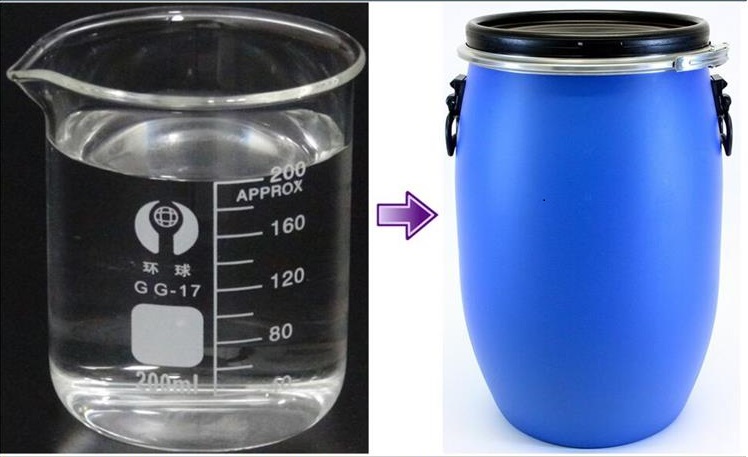We unleash your business potential by maximize the business innovation.
Send EmailPoly Propylene Glycol, Polyoxy Propylene, Case polyol, PPG, PPG 400, 700, 1000, 2000, Caradol ET 56-200, Caradol ED-110-03, Caradol ED 260-02, Pluriol (BASF), 25322-69-4
BASF PRODUCTS:
- Pluriol® P 600 Polypropylene glycol 600 Liquid approx. 100 approx. 130 187
- Pluriol® P 900 CA 900 Liquid approx. 100 approx. 140 124
- Pluriol® P 2000 2000 Liquid approx. 100 approx. 440 56
- Pluriol® P 4000 4000 Liquid approx. 100 approx. 1050 28
1. Product Description:
-
Product Name: Polypropylene Glycol (PPG)
-
Chemical Formula: (C₃H₆O)n
-
CAS Number: 25322-69-4
-
Appearance: Colorless or slightly yellow liquid
-
Molecular Weight: Varies, typically in the range of 400-4000 g/mol
-
Melting Point: -15°C
-
Density: 1.05 g/cm³
-
Solubility: Miscible with water and many organic solvents
2. Product CAS No:
-
CAS Number: 25322-69-4
3. Physical and Chemical Properties:
-
Physical Properties:
-
Appearance: Colorless or slightly yellow liquid
-
Melting Point: -15°C
-
Density: 1.05 g/cm³
-
Solubility: Miscible with water and many organic solvents
-
-
Chemical Properties:
-
Chemical Formula: (C₃H₆O)n
-
Reactivity: Generally chemically inert and does not react with many chemicals. However, it can react at high temperatures or with strong oxidizing agents.
-
pH Stability: Stable over a wide pH range
-
4. Uses:
-
Cosmetics: Used in products like soap, cream, lotion, lipstick, shampoo, conditioner, and deodorant
-
Food: Found in products like margarine, butter, ice cream, candy, and chocolate
-
Industrial: Used in adhesives, paints, plastics, rubber, and textiles
5. Other Names:
-
Poly Propylene Glycol
-
PPG
-
Poly(propylene glycol)
-
Poly(oxypropylene)
6. Common Name:
-
Polypropylene Glycol
CAS: 25322-69-4
Molecular Formula: CH4
Names and Identifiers
| Name | Poly propylene glycol |
| Synonyms | PPG poly(oxypropylene) poly(propene oxide) Poly propylene glycol Poly(propylene glycol) POLYPROPYLENE GLYCOL 400 POLYPROPYLENE GLYCOL 700 POLYPROPYLENE GLYCOL 2000 POLYPROPYLENE GLYCOL 1000 Polypropylene glycol diol Polypropylene glycol 2000 POLYPROPYLENE GLYCOL P 400 Poly(propylene glycol) 4000 Poly(propylene glycol) 3000 Poly(propylene glycol) 1000 Polypropylene glycol - 2000 grade polypropylene glycol standard 5300 POLYPROPYLENE GLYCOL, DIOL TYPE, 700 POLYPROPYLENE GLYCOL, DIOL TYPE, 1000 POLYPROPYLENE GLYCOL, DIOL TYPE, 2,000 (2S)-2-{[(2R)-2-hydroxypropyl]oxy}propan-1-ol (2R)-2-{[(2R)-2-hydroxypropyl]oxy}propan-1-ol (2R)-2-{[(2S)-2-hydroxypropyl]oxy}propan-1-ol (2S)-2-{[(2S)-2-hydroxypropyl]oxy}propan-1-ol |
| CAS | 25322-69-4 |
| EINECS | 200-338-0 |
| InChI | InChI=1/C6H14O3/c1-5(8)4-9-6(2)3-7/h5-8H,3-4H2,1-2H3/t5-,6+/m0/s1 |
Physico-chemical Properties
| Molecular Formula | CH4 |
| Molar Mass | 16.04246 |
| Density | 1.01g/mLat 20°C |
| Melting Point | -40 °C |
| Boling Point | >300 °C |
| Flash Point | 230 °C |
| Water Solubility | PRACTICALLY INSOLUBLE |
| Solubility | Insoluble in water. |
| Vapor Presure | <0.01 mm Hg ( 20 °C) |
| Vapor Density | >1 (vs air) |
| Appearance | Transparent liquid |
| Specific Gravity | 1.005 |
| Color | White to light gray |
| Storage Condition | Room Temprature |
| Stability | Stable. Substances to be avoided include strong oxidizing agents. |
| Refractive Index | n20/D 1.451 |
| MDL | MFCD00084446 |
| Physical and Chemical Properties | A colorless to yellowish viscous liquid. |
| Use | For Defoamers |
Risk and Safety
| Safety Description | 24/25 - Avoid contact with skin and eyes. |
| WGK Germany | 1 |
| RTECS | TR5250000 |
| TSCA | Yes |
| HS Code | 39072090 |
Upstream Downstream Industry
| Raw Materials | Propylene oxide |
Reference Information
| LogP | 0.01 at 25℃ |
| introduction | polypropylene glycol is a polymer with the molecular formula H(C3H6O)nOH, a colorless to light yellow viscous liquid. Not volatile. Non-corrosive. The molecular weight of general commodities is 400~2050. Lower molecular weight polymers are soluble in water. Higher molecular weight polymers are only slightly soluble in water, soluble in oils, many hydrocarbons, aliphatic alcohols, ketones, esters, etc. The hydroxyl groups at both ends of the molecule can be esterified to form monoesters or diesters. Its monoester is a non-ionic surfactant, and can also react with alcohol to form ether. It is a solvent for vegetable oil, resin and paraffin, and is also used to prepare alkyd resin, emulsifier, demulsifier, lubricating oil and plasticizer. It is obtained by condensation of propylene oxide and propylene glycol under high pressure or in the presence of an acidic catalyst. |
| use limit | for fermentation process, limited to GMP (GB 2760-96). |
| toxicity | LD50>10 g/kg (mouse, oral). mutagenicity test, Ames test, mouse bone marrow micronucleus test, mouse sperm aberration test, no abnormalities. Propylene glycol stimulation of rabbit corneal epithelium will produce temporary slight corneal congestion. If propylene glycol is washed with 50% aqueous solution for 5 minutes to remove propylene glycol, it will not cause any harm, but if it is stimulated with undiluted propylene glycol for 5 minutes, it will produce moderate reaction. |
| emergency operation | treatment method after contact: 1. inhalation: move to fresh air and rest. 2. Skin contact: remove contaminated clothes and rinse skin or shower with plenty of water. 3. eye contact: open your eyes, rinse with flowing water for 10 minutes, and then see a doctor. |
| use | defoamer; Solvents for vegetable oil, wax and resin. Used for eucalyptus sugar, beverages, candy, yeast, etc. Defoamer. Used in the production of yeast, monosodium glutamate, etc. The defoaming efficiency is several to dozens of times that of edible oil. |
| production method | glycerin and refined propylene oxide are polymerized under the catalysis of potassium hydroxide at a temperature of 90~95 ℃ and a pressure of 0.4 ~ 0.5MPa. Then cool to 60~70 ℃, press the material into a neutralization kettle, add water under stirring to neutralize excess potassium hydroxide, then add phosphoric acid at 60~70 ℃ to neutralize to pH 6~7, then slowly raise the temperature to 110~120 ℃, dehydrate and filter in vacuum. It is formed by the addition reaction of propylene glycol polymer and water. |
